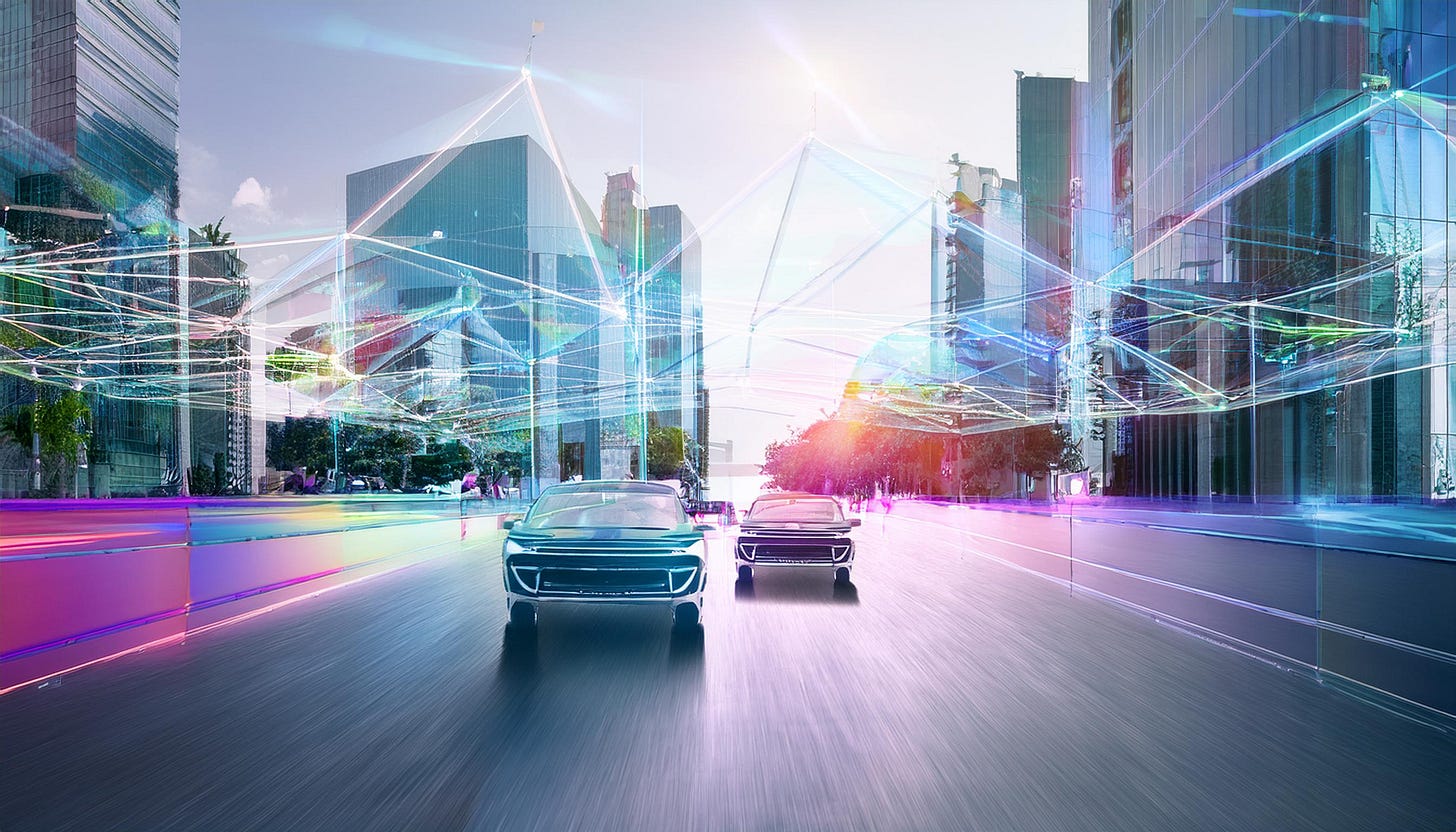AI Integration Race
The full-stack battle for our futures. Plus: batteries, bandages, braggadocia, and more from Roundup #34

After a summer break, The New New returns for the 34th time.
This issues starts my own ah-ha: a perspective on the AI-infused race for our futures, including my take on who is best situated to win.
Then we roll into a roundup that covers the gamut — from scientific advancements to societal quirks, with a dash of digital dilemma. There are concrete batteries and mosquito tracking lasers, plus exploration into reimagining how we work, heal, and even grieve.
This is a big one, so let’s dig in.
AI Integration Race
The full-stack, vertical integration battle for our futures.
What do Microsoft, Apple, and Google all have in common?
It’s not that they have all fought monopolistic rulings and fears of breakups (welcome to the club, Google); it is that they are all racing for the same omnipresence in the future of our lives.
They all have the same vision for their AIs: a personal assistant that follows you everywhere, from work to home, optimizing your schedule, managing tasks, anticipating your needs, and making life easier.
For this co-piloting, AI-as-your-personal-assistant future to be realized to its fullest, AI needs to be with you everywhere you go and work flawlessly across all the devices and software you use.
Achieving this vision requires a vertically integrated “full stack” of technologies:
Business Applications (e.g., analytics, financial systems, custom apps)
Communication Platforms (e.g., mail, calendars, email, chat)
Productivity Tools (e.g., documents, sheets, slides)
Operating Systems (e.g., ChromeOS, macOS, Windows)
Personal Computing (e.g., laptops, phones, tablets)
Home Computing (e.g., smart speakers, thermostats, robots)
By dominating this “full stack,” a tech giant can create a more powerful, personalized AI experience. Your data flows freely, allowing the AI to learn your habits, anticipate your needs, and ultimately, become your digital co-pilot.
So, who will win this vertical integration race?
Let’s break it down.
Microsoft?
It boasts impressive advancements with Copilot but lacks a dominant phone OS.
Apple?
They are making strides with their “Intelligence” launch, spatial computing visions, and newly rumored robotic ventures. However, they lack a robust public cloud and have yet to achieve widespread adoption for their communication and productivity tools.
The other Big Tech Cos — AWS, Salesforce, IBM, and Oracle?
They have significant holes across the integration stack.
And that leaves… Google.
Google has extensive offerings across almost all areas of the “full stack.” From business tools like GCP and G Suite to personal offerings like Gmail, Android, and Nest to a well-branded, high-performing AI, Gemini, Google has a strong hold on many aspects of our digital lives.
While Google has the edge today, the race is far from over. As Big Tech’s vertical integration grows, we should expect monopolistic concerns to increase (and rightfully, necessarily so).
One thing’s for sure—the winner of this integration race will dominate the future of our everyday lives.
The Roundup
Out of the Labs
Cement Supercapacitor,
turning a common building material into batteries
Semi-Solid-State Batteries,
using gel to build much more efficient conductivity
Electric Bandages,
heals wounds faster while remaining comparability inexpensive and able to use at home
Mosquito Tracker,
with lasers and alert systems
In the Works
Only Happy Customers,
real-time voice modification tech seeks to reduce stress in call center staff
Sludge Tax,
calculating what inefficiency is costing you and your company
AI Risk Repository,
a living database of over 700 AI risks categorized by their cause and risk domain, published by MIT’s CSAIL
Online
Slop,
what Spam is to email, Slop is to dubious AI-generated content
Digitine,
short for “digital guillotine,” is an extreme class of cancellation
Eyechat,
share a stare with a stranger
In Life
Social Prescribing,
helping patients improve their health and well-being by connecting them to community resources and activities, like art classes and cycling groups
Aerial Ashes,
scattering ashes of a loved one… by drone
Busy Bragging,
verbally oversharing one’s workload (and it’s not a good look)
In Style
Movewear,
aka Powered Pants, consumer-friendly exoskeletal legs that make it easier to climb and descend stairs or hills
Sneex,
“luxury hybrid stiletto” and “hy-heel sneaker,” aka comfortable high-heel shoes, from the founder of Spanx
Outfit Generator,
via the iPhone’s Notes app, of all things
Mogul Style,
aka the conformity of “billionaire bland”
Can’t Stop Thinking About
Other People Knowing What I am Thinking About
Last year, Issue 26 put Neurorights into the spotlight.
And I still cannot stop thinking about how scientists are getting better at decoding what happens inside our minds—and it’s only a matter of time before others want a peek.
Plus, the roundup was a gem that had us:
protecting ourselves from fires (and AI)
discovering a virgin birth
drawing lights
hearing silence
working later
stretching LEDs
using disaster-triggered vending machines
navigating emerging buzzwords
visualizing futures
and more
It’s all still fresh today, so dig back in here.
The New New’s mission is to fuel foresight. Every issue delivers a curated view into the discoveries, launches, trends, and movements shaping tomorrow—all explored through broad landscapes, from labs and studios to businesses and culture.
Each month(ish), this is pulled together by me, Brent Turner, and published on LinkedIn, Substack, and my site.
Okay, I’m off to generate some more bland outfits (which I was doing long before the billionaires copped my style).
- B
⌘



